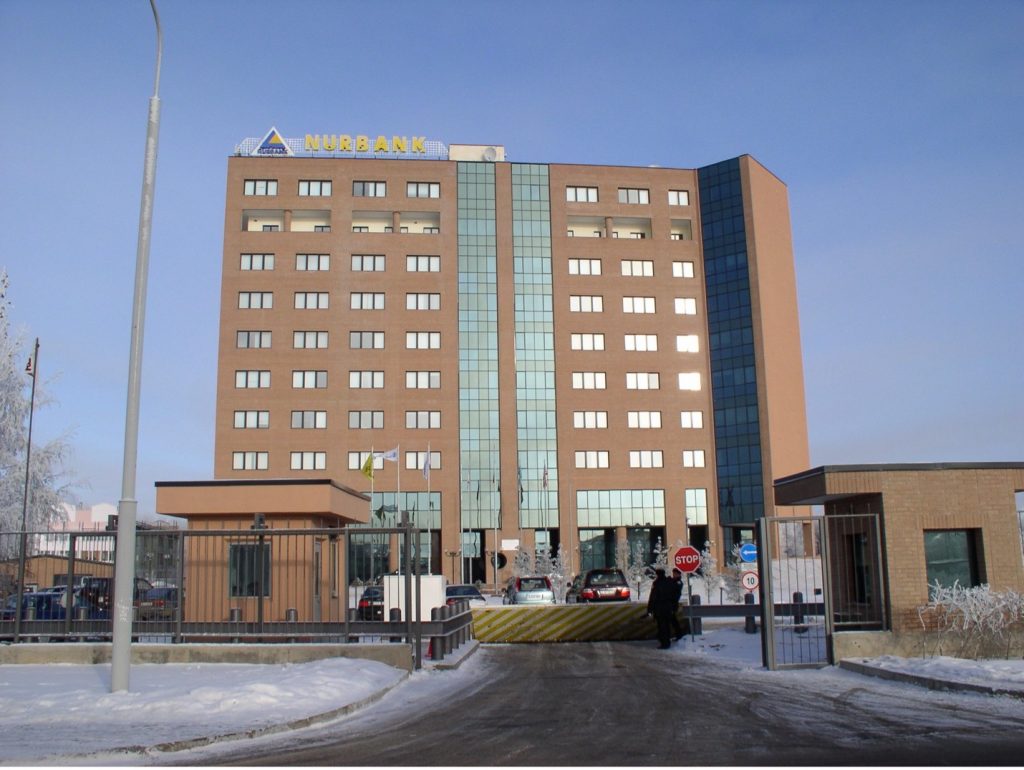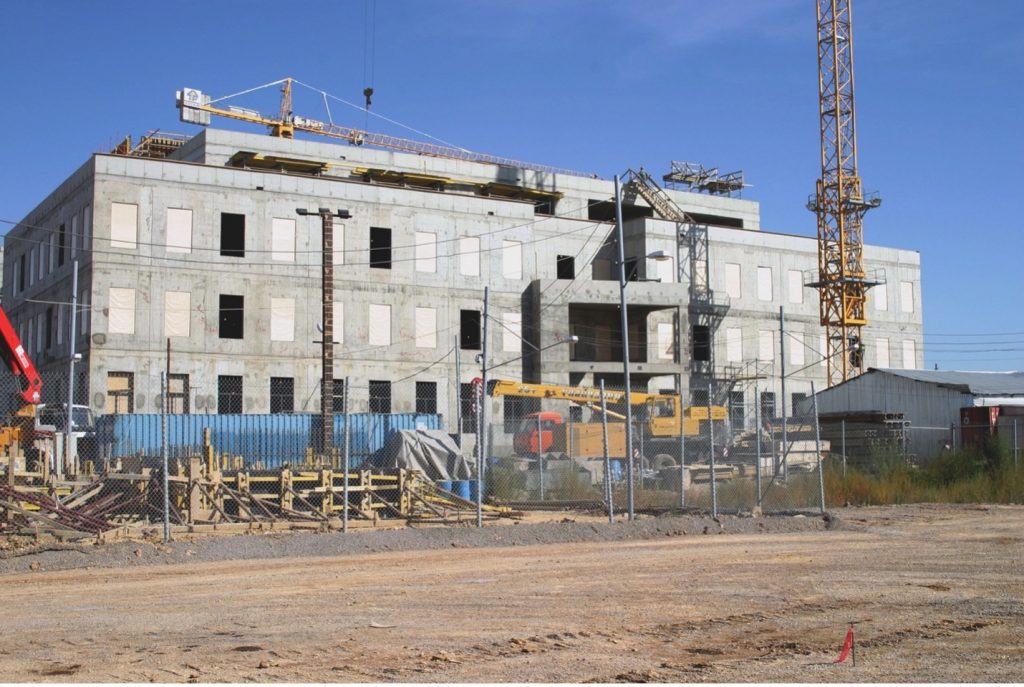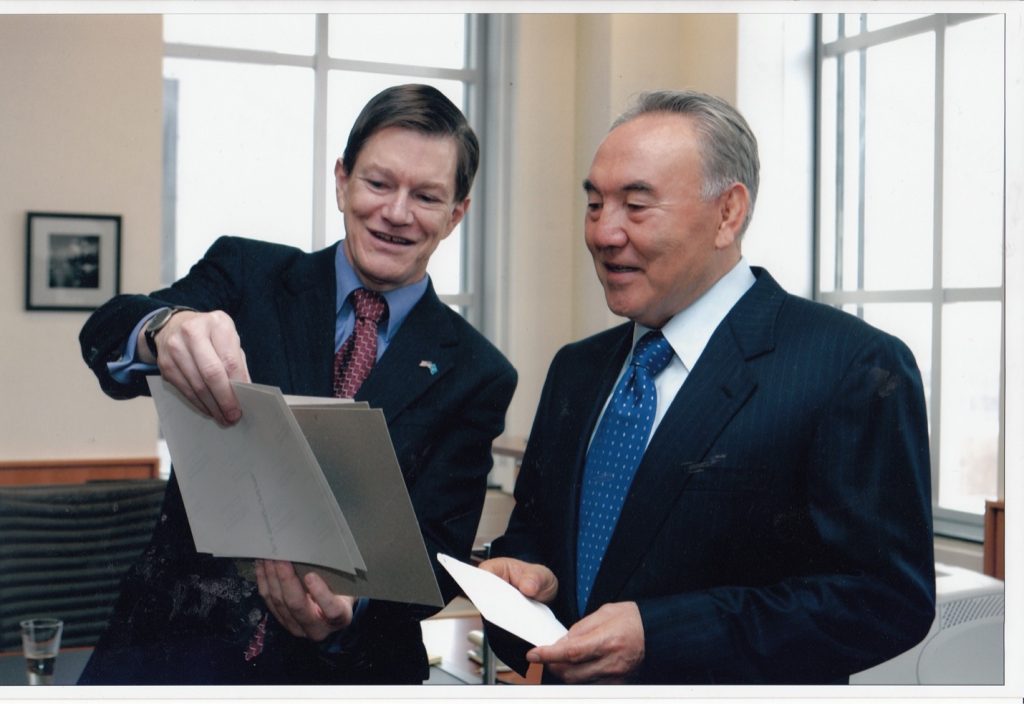Kazakhstan- A Moving Experience
Recent Articles
Author: Ambassador (Ret.) John Ordway
05/11/2021

Ambassador (Ret.) John Ordway
When I arrived in Almaty in September 2004, my new office was in a small 19th-century building on Furmanova. A small portion of the Embassy staff worked there, but the majority of the Mission’s staff worked elsewhere. USAID and a few other agencies worked in a modern office building a few blocks away. The consular section and our management staff worked in a high-rise office building, Samal Towers, across town. I split most of my days working in two or sometimes three locations to attend meetings, meet my colleagues, and stay on top of everything the Embassy was doing. The ambassador’s residence was in Gorniy Gigant. Almaty’s famous traffic jams made my days even even longer and more “interesting.”
The spread-out nature of Embassy Almaty offices and numerous out-of-office meetings and events put a premium on minimizing the time I spent in the car. As a result, I had to plan each day carefully. I only had access to classified traffic [official information from Washington] at the Chancery, so I would normally start each day there. I didn’t have much control over the location of outside events and meetings, so I would try to schedule office time before and after those events in either Samal Towers or the USAID building, depending on where I was coming from and where I was headed next.
But trying to be efficient while moving around Almaty was only a small part of the problem. The bigger challenge was trying to do my primary job: interacting with the various elements of the Kazakhstani government. While most of the diplomatic corps was in Almaty, almost all the Kazakhstani government was located in Astana – 600 miles north. This meant frequent travel to Astana – almost always by air. Occasionally I would fly there and back in the same day – which was exhausting and not particularly efficient. It usually meant getting up at 4:30 or 5:00 am to make the early flight, and getting back home as late as midnight. I quickly decided that spending multiple days in Astana would be much more efficient and productive.

Office building where Astana Branch Office was located. Remodeled and expanded to serve as temporary Embassy office space for several months before the new building was completed.
Thanks to the hospitality of our Branch Office chief, Lynne Tracy, I set up housekeeping in a “suite” in the basement of her residence. I could also use the residence to host guests for coffee or even lunch or dinner.
Luckily, there was a solution to this nomadic lifestyle: construction of a new embassy in Astana. On my first visit to the “northern capital” shortly after my arrival, I went out to the construction site. It was a very large, completely vacant, piece of land, surrounded by completely vacant land. The paved road ended well short of our site.

The Embassy in Astana (Nur-Sultan) under construction, with the Ak Orda (Presidential Palace) and Baiterek Tower in the background
Over the next two years, thanks to terrific management by our project staff, the new site and the buildings on the compound took shape. In addition to the Chancery, there was an ambassador’s residence, a house for the Marine security guard detachment, and a warehouse. What there wasn’t was any place to park cars and other embassy vehicles inside a heated structure – in one of the world’s coldest capitals. (There was a 2-3 car garage attached to the ambassador’s residence.)

The Embassy front entrance under construction.
I realized early on that a successful transition required extensive and detailed planning. Some of the key issues included making sure we had enough trained staff in the right locations to carry out the functions that were moving to Astana, or remaining behind in Almaty. In the case of American staff, we decided that anyone arriving starting summer 2006 would move directly to Astana, and anyone departing Almaty during that transfer cycle would not move to Astana. This was easier on our employees and their families, and eased the burden of finding and making ready housing in Astana.
An even more important issue was ensuring that enough of our key Kazakhstani employees also moved to Astana. This was a challenge, given the networks of family and friends that our colleagues had in Almaty – and the overwhelming difference in climate and available amenities. We got authority to offer financial incentives to make the move and made clear which jobs would not be maintained in Almaty. In the end, we did get enough of our Kazakhstani employees to move and thereby ensure good continuity of our operations.
In the summer of 2006, my wife and I moved to Astana even before the new embassy building and residence were ready. I worked out of the small branch office for a couple of months before the chancery was ready for occupancy. The principal officer’s residence was slated to become the residence of the Deputy Chief of Mission (DCM). Since Lynne Tracy had moved on to her next assignment, I got to move out of her basement and had the run of the entire house. The incoming DCM, Kevin Milas and his wife Eileen, arrived later that summer and graciously offered to occupy temporary quarters until my wife and I could move into the new residence on the embassy ground.

Ambassador Ordway showing photos to President Nazarbayev in the ambassador's office on day of Embassy dedication.
On November 14, 2006, we held the official dedication of the new Embassy. President Nazarbayev attended the dedication and participated in the official ceremony. I then hosted him and other dignitaries at lunch in our new residence. Foreign Minister Tokayev (now president of Kazakhstan), and my distinguished friend and predecessor as ambassador, Beth Jones, were also among the guests.
###
On May 14, join four former United States Ambassadors to Kazakhstan to discuss the key developments in the U.S.-Kazakhstan relationship over the last three decades. Register here to receive a livestream link prior to the event.